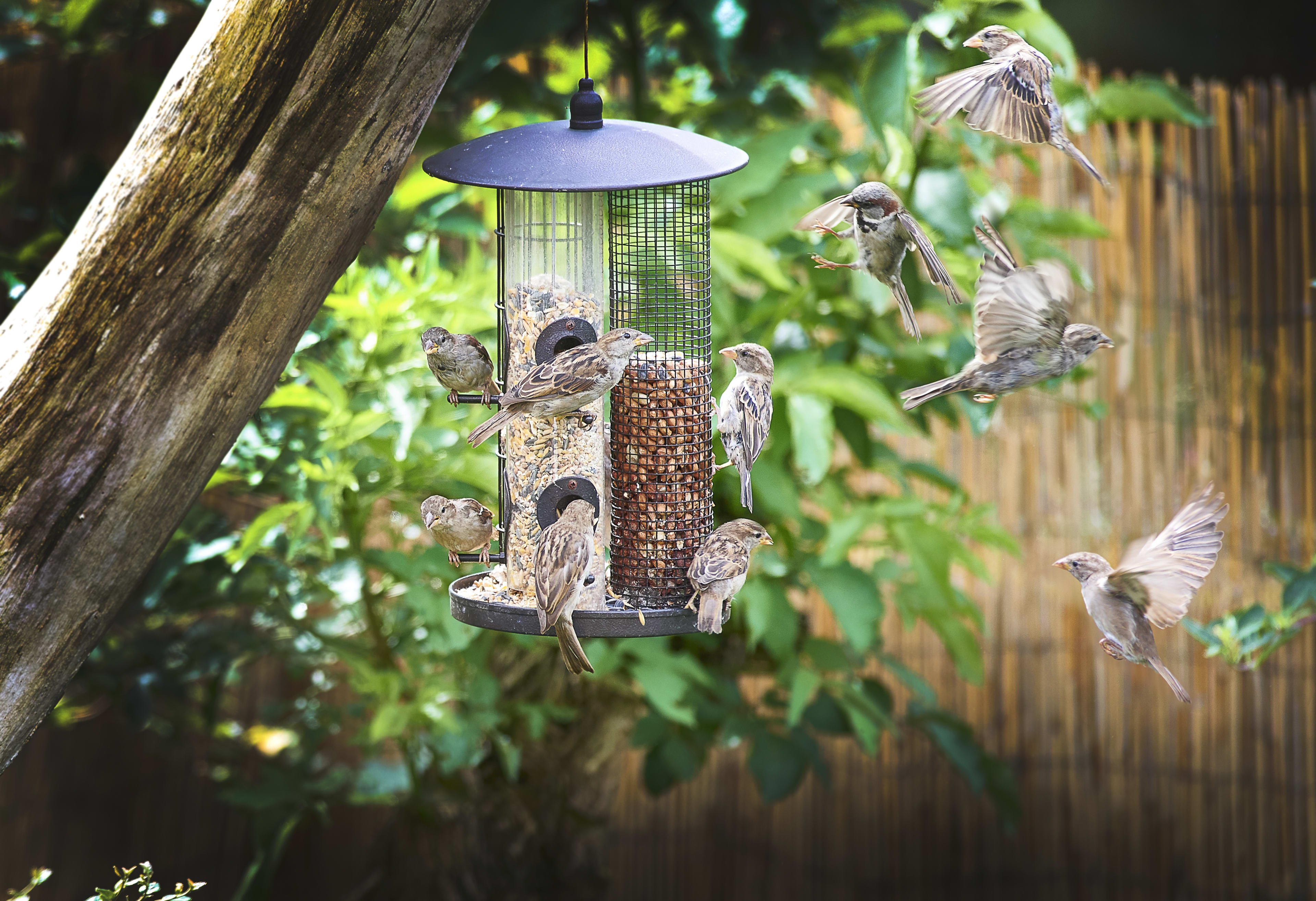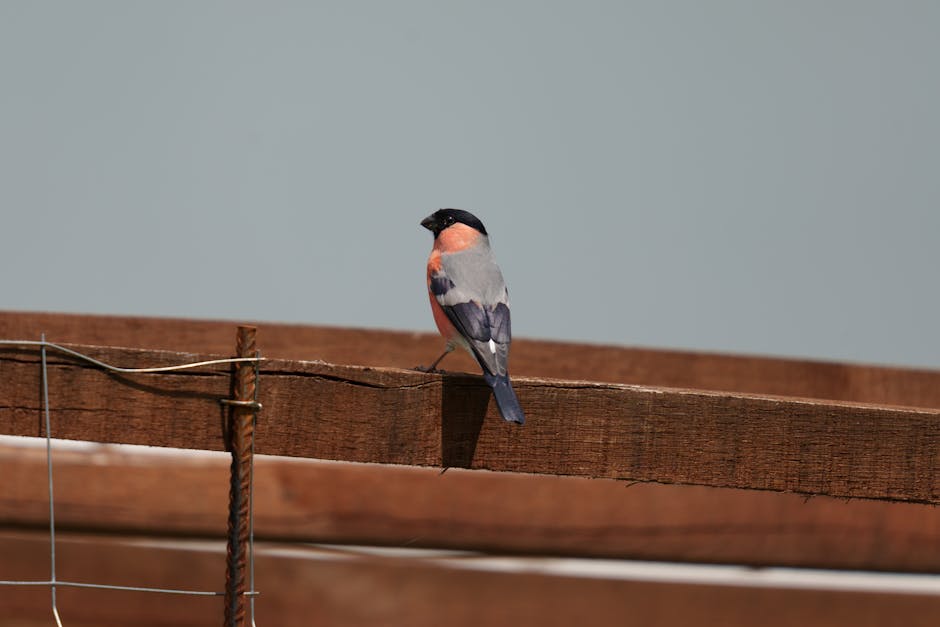Do you love watching birds flutter around your yard but feel frustrated when they ignore your bird feeder? You’re not alone.
Many bird enthusiasts share your desire to attract these charming creatures to their gardens. Understanding how to get birds to use a bird feeder can transform your outdoor space into a lively, colorful haven. Imagine sipping your morning coffee while listening to their cheerful songs or observing their vibrant feathers up close.
This guide will reveal simple yet effective strategies to entice birds to visit your feeder. You’ll discover tips that tap into birds’ natural instincts, ensuring they choose your garden as their favorite dining spot. Keep reading to unlock the secrets of creating a bird-friendly oasis that will bring joy and beauty to your everyday life.

Credit: www.kingsyard.com
Choosing The Right Feeder
Choosing the right bird feeder plays a big role in attracting birds to your yard. The feeder should match the types of birds you want to see. It must also suit your outdoor space and last through different weather conditions. The right feeder makes feeding easy and safe for birds.
Types Of Bird Feeders
Different feeders attract different birds. Tube feeders are great for small birds like finches and chickadees. Platform feeders offer space for larger birds such as cardinals and jays. Hopper feeders hold more seed and protect it from rain. Suet feeders attract woodpeckers and nuthatches. Choose a feeder type based on the birds in your area.
Material And Durability
Feeders come in plastic, metal, and wood. Plastic feeders are lightweight and affordable but may crack in cold weather. Metal feeders resist squirrels and last long. Wood feeders look natural but need regular care to prevent rot. Pick a material that fits your budget and climate. Durability ensures fewer replacements and less waste.
Size And Capacity
Consider how much seed the feeder holds. Small feeders need frequent refilling but attract fewer birds at once. Large feeders support more birds but can waste seed if not visited often. A medium size often works best for most yards. Match the feeder size to the number of birds and your willingness to refill it.
Selecting The Best Bird Food
Choosing the right bird food is key to attracting a variety of feathered visitors to your feeder. The type of food you offer will determine which birds show up and how often they return. Understanding what birds prefer and how to keep the food fresh can make your bird feeder a popular spot in your yard.
Popular Seeds And Mixes
Black oil sunflower seeds are a top favorite among many bird species. They have a high oil content and thin shells, making them easy to eat. Millet and nyjer seeds also attract small songbirds like finches and sparrows.
Mixed seed blends can be convenient, but watch out for fillers like red millet or oats that many birds might ignore. If you want to attract a specific bird type, it’s better to offer seeds they prefer rather than a generic mix.
Food Preferences By Bird Species
Different birds have distinct tastes. Cardinals love sunflower seeds, while chickadees go for peanuts or suet. Finches are drawn to nyjer seed, and woodpeckers prefer suet or nuts.
Do you want to see a certain bird regularly? Try matching your feeder’s offerings to that bird’s favorite food. This targeted approach can turn your feeder into a reliable hangout for your desired visitors.
Avoiding Mold And Spoilage
Keeping bird food fresh is crucial. Moldy or spoiled seeds can harm birds and discourage them from visiting. Store seeds in a cool, dry place and check your feeder regularly for dampness or clumps.
Cleaning your feeder every two weeks helps prevent bacteria buildup. Have you noticed fewer birds after rain? It might be time to refresh the food and clean the feeder to keep your visitors happy and healthy.
Placing Your Feeder Strategically
Placing your bird feeder in the right spot makes a big difference. Birds need a safe and visible place to feel comfortable. Strategic placement helps attract more birds to your feeder. It also keeps them safe and makes feeding easy.
Ideal Locations For Visibility
Choose a spot where birds can see the feeder easily. Open areas near trees or bushes work well. Birds like to spot food from a distance. A place with natural light helps birds find the feeder fast. Avoid hiding the feeder behind thick branches or walls.
Safety From Predators
Birds need protection from cats, hawks, and other predators. Place the feeder away from places predators can hide. Keep it at least 10 feet from bushes or fences. Use poles with baffles to stop climbing animals. Avoid placing feeders too close to windows to prevent bird collisions.
Accessibility For Birds
Make sure birds can land and take off easily. Avoid placing feeders too close to busy walkways or noisy spots. A clear flight path helps birds feel safe. Keep feeders at a height between 5 to 6 feet. This height is easy for birds and also for you to refill.

Credit: dengarden.com
Maintaining A Clean Feeder
Keeping your bird feeder clean is key to attracting birds and keeping them safe. Dirt, old seed, and droppings can scare birds away and spread illness. A clean feeder looks inviting and helps birds visit often. Regular care keeps your feeder in great shape and your feathered friends healthy.
Regular Cleaning Schedule
Set a cleaning routine to keep the feeder fresh. Clean it at least once every two weeks. During wet weather, clean it more often to stop mold growth. Use warm water and mild soap. Rinse well to remove soap traces. Let it dry completely before refilling.
Preventing Disease
Dirty feeders can spread sickness among birds. Remove old seed and droppings daily if possible. Use a solution of one part bleach to nine parts water for deep cleaning. Soak the feeder for 10 minutes, then rinse thoroughly. Avoid sharing feeders between many bird species to reduce risk.
Handling Weather Conditions
Weather affects feeder cleanliness and seed quality. Rain and snow can make seeds wet and moldy. Place feeders in sheltered spots to protect from rain. In hot weather, check seeds often to prevent spoilage. Remove snow from feeders to keep seeds accessible. Protect feeders from strong wind to avoid spillage.
Attracting Birds With Additional Features
Enhancing your bird feeder area with extra features can make a big difference in attracting more birds. Birds look for more than just food—they want a safe and inviting environment. Adding water, places to perch, and native plants creates a natural habitat that keeps birds coming back.
Using Water Sources
Birds need water for drinking and bathing. Adding a birdbath or a small water fountain near your feeder encourages them to stay longer. Moving water attracts attention, so consider a fountain with gentle motion.
Keep the water clean and fresh to avoid spreading diseases. Have you noticed how birds often visit a spot with both food and water? Providing both in one area makes your feeder a hotspot.
Adding Perches And Shelter
Birds prefer feeders that offer a place to rest and hide from predators. Adding extra perches around the feeder gives them room to sit comfortably while feeding. You can use branches, sticks, or even small wooden platforms.
Shelter is equally important. Shrubs, trees, or even a small brush pile nearby provide cover and protection. Think about how you feel safer with a bit of shade or a nearby tree—birds do too.
Incorporating Native Plants
Planting native flowers, shrubs, and trees near your feeder attracts birds naturally. These plants provide food like berries and insects, which complement the seeds you offer. Native plants also create a familiar environment that birds trust.
Try to choose a variety of plants that bloom at different times to keep birds interested year-round. What native plants grow well in your area that birds might love? Adding these around your feeder can transform your yard into a lively bird sanctuary.

Credit: www.kingsyard.com
Timing And Seasonal Considerations
Timing plays a big role in attracting birds to your feeder. Birds’ eating habits change with the seasons. Knowing when and what to feed helps keep birds visiting regularly. Seasonal changes affect bird behavior and food availability. Feeding at the right time supports their natural cycles and needs.
Feeding During Migration
Migration seasons are busy times for birds. Many travel long distances and need extra energy. Offer high-energy foods like sunflower seeds and suet. Keep feeders clean and full during spring and fall. Birds rely on feeders as rest stops on their journey.
Adjusting Food Types By Season
Bird food preferences shift with the weather. In winter, birds need fatty, high-calorie foods. Black oil sunflower seeds and peanuts work well. Summer calls for lighter foods like fruit and nectar. Change food types to match seasonal needs. This keeps birds healthy and visiting often.
Encouraging Nesting Nearby
Nesting birds need a safe, quiet space near feeders. Plant native shrubs and trees to provide shelter. Avoid moving feeders during nesting season. Offer foods like mealworms to attract insect-eating birds. A good habitat encourages birds to stay longer and return each year.
Common Mistakes To Avoid
Attracting birds to your feeder can be rewarding. Avoiding common mistakes helps create a safe and inviting spot. Some errors can scare birds away or harm them. Pay attention to these pitfalls to enjoy more feathered visitors.
Overfeeding And Wasting Food
Putting too much food in the feeder leads to waste. Birds may not eat all the seeds before they spoil. Wet or old food can attract pests and cause illness. Offer just enough food for a day or two. Refill regularly to keep the seed fresh and appealing.
Ignoring Feeder Maintenance
Dirty feeders discourage birds from visiting. Mold, bacteria, and leftover seeds can spread diseases. Clean your feeder every week with warm water and mild soap. Rinse well and dry before refilling. A clean feeder keeps birds healthy and happy.
Using Harmful Materials
Some feeders contain toxic paint or sharp edges. Avoid feeders made with unsafe plastics or metals. Choose feeders with smooth surfaces and safe, non-toxic materials. Also, avoid feeders treated with pesticides or chemicals. Safe feeders protect birds and last longer.
Frequently Asked Questions
How Do I Attract Birds To A New Feeder?
Place the feeder in a quiet, safe spot near trees or shrubs. Use fresh, high-quality birdseed. Be patient; birds take time to discover new feeders.
What Type Of Bird Feeder Works Best?
Tube feeders attract small songbirds, while platform feeders suit larger birds. Choose feeders based on local bird species for better results.
How Often Should I Clean The Bird Feeder?
Clean feeders every two weeks or more often in wet weather. Regular cleaning prevents mold and disease, keeping birds healthy and safe.
What Seeds Attract The Most Birds?
Black oil sunflower seeds attract many species. Nyjer seeds are great for finches. Offering a mix increases bird variety at your feeder.
Conclusion
Birds will visit your feeder if you keep it clean and full. Use fresh seeds and place the feeder in a quiet spot. Watch patiently, and soon birds will come for food. Changing seed types can attract different bird species.
Remember, regular care helps build trust with your feathered friends. Enjoy the beauty and sounds of birds in your yard. Feeding birds brings joy and supports local wildlife. Keep trying, and your feeder will become a popular spot.

